To address the issue of Dometic AC compressor running but not cooling, check for clogged filters, ensure proper ventilation around the unit, and inspect for refrigerant leaks. If problems persist, consult the user manual or seek professional HVAC assistance.
If you’re experiencing the frustrating issue of your Dometic AC compressor running but not cooling, don’t worry, we’ve got you covered. Our troubleshooting tips will help you identify and resolve the problem, getting your AC unit back in top-notch cooling condition.
When your AC compressor is running but not cooling, it can be caused by various factors. It’s important to go through a comprehensive troubleshooting process to pinpoint the exact issue and apply the appropriate fix.
First and foremost, check the voltage to ensure it is sufficient for the AC unit to operate effectively. Low voltage can hinder the compressor’s performance and result in inadequate cooling. Use a voltmeter to measure the voltage and make any necessary adjustments.
Next, measure the cooling differential, also known as delta-t. This will help you determine if the compressor is doing its job. If the cooling fins are not frozen over and the compressor doesn’t feel overly hot to the touch, it’s a good sign that the compressor is functioning correctly.
If everything seems fine so far, it’s time to inspect the start and run capacitors. These components can often be the culprit behind cooling issues. Look for any signs of damage or deterioration, particularly in the black start capacitor. If you spot any issues, consider replacing the capacitor to restore proper cooling functionality.
If none of the above troubleshooting steps resolve the problem, it may be necessary to conduct further testing or consult a professional to determine if the compressor needs to be replaced.
Remember, addressing a Dometic AC compressor running but not cooling issue requires a systematic approach. Be patient and thorough in your troubleshooting process, and you’ll soon have your AC unit cooling your space effectively once again.
Troubleshooting Tips for Dometic AC Not Cooling
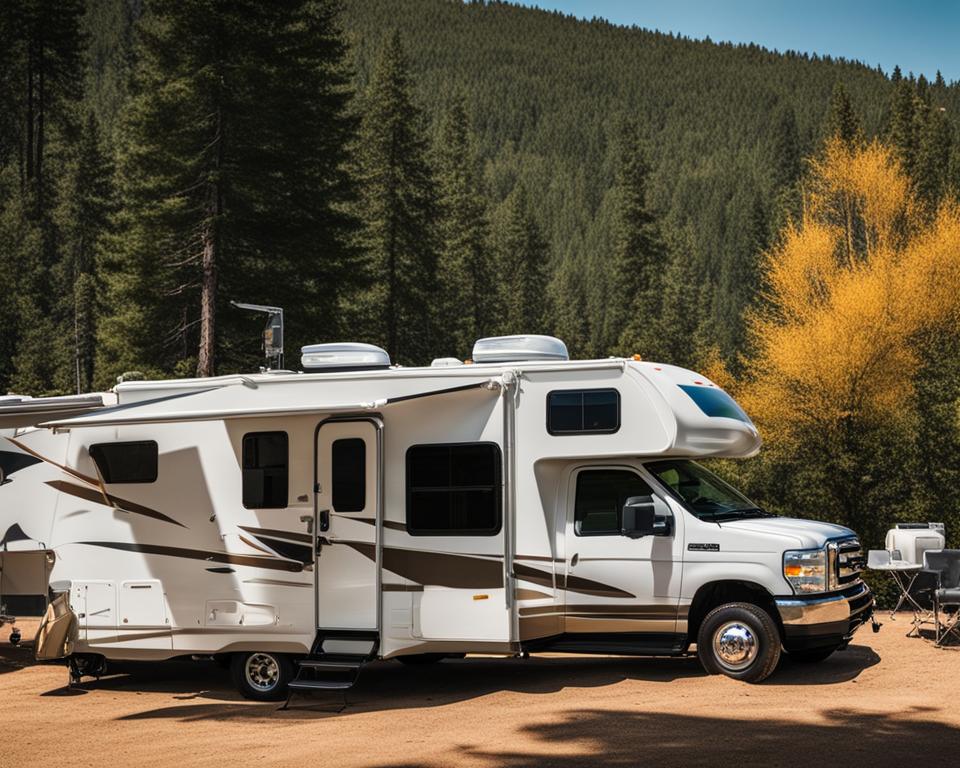
When your Dometic AC is not cooling properly, it can be frustrating, especially during hot summer months. However, there are several common reasons why your AC may not be producing cold air. By following these troubleshooting tips, you can identify the problem and take appropriate action to restore your AC’s cooling functionality.
1. Check the Power Panel
Start by checking the power panel for any tripped or blown fuses. A tripped fuse can cause the compressor to lose power and prevent the AC from cooling effectively. If you find any issues, reset the circuit breaker or replace the fuse to see if it resolves the problem.
2. Verify the Thermostat
Ensure that the thermostat is set to an appropriate temperature. If the temperature is set too low, the compressor may overwork and shut down, resulting in no cold air. Adjust the thermostat to a reasonable level and monitor if the AC starts producing cool air.
3. Inspect the Compressor
An issue with the compressor itself can also lead to a lack of cooling. Check for any broken or malfunctioning components, such as damaged wiring or a faulty motor. If you notice any issues, it is recommended to contact a professional technician to inspect and repair the compressor.
4. Address Icing Problems
If you notice that your AC unit is not producing cool air and there is ice buildup on the coils, it is likely an icing problem. In this case, the ice detector monitor may need to be replaced. High humidity levels, restricted airflow, or low refrigerant levels can contribute to icing issues.
By following these troubleshooting tips, you can effectively address the issue of your Dometic AC not cooling. However, if the problem persists or if you are unsure about the root cause, it is recommended to seek professional assistance from a certified HVAC technician.
Remember, regular maintenance and timely repairs can help optimize the performance and lifespan of your AC unit, keeping you cool and comfortable during scorching summer days.
| Possible Reasons for Dometic AC Not Cooling |
|---|
| Tripped or blown fuses in the power panel |
| Thermostat set to an excessively low temperature |
| Broken or malfunctioning components in the compressor |
| Icing problems caused by high humidity, restricted airflow, or low refrigerant levels |
RV AC Blows Cold Then Warm
If your RV AC unit initially blows cold air but then turns warm, there are a few possible causes to consider. One common issue is a broken capacitor, which can prevent the AC unit from blowing cold air. While this is less likely in younger AC units, it is still a possibility. Another potential problem is a malfunctioning or broken compressor. Additionally, check the fuses on the disconnect to ensure they are not blown, as this could affect the operation of the AC unit. Testing the compressor and checking the fuses can help pinpoint the cause of the warm air.
“A broken capacitor can be the culprit behind warm air coming out of your RV AC unit. Even in newer units, capacitors can fail and impede the cooling process. Another possible cause is a malfunctioning or broken compressor. Don’t forget to inspect the fuses on the disconnect as well, as blown fuses can disrupt the AC unit’s operation. By testing the compressor and checking the fuses, you can identify the exact source of the warm air issue.”
RV Air Conditioner Stopped Blowing Cold Air
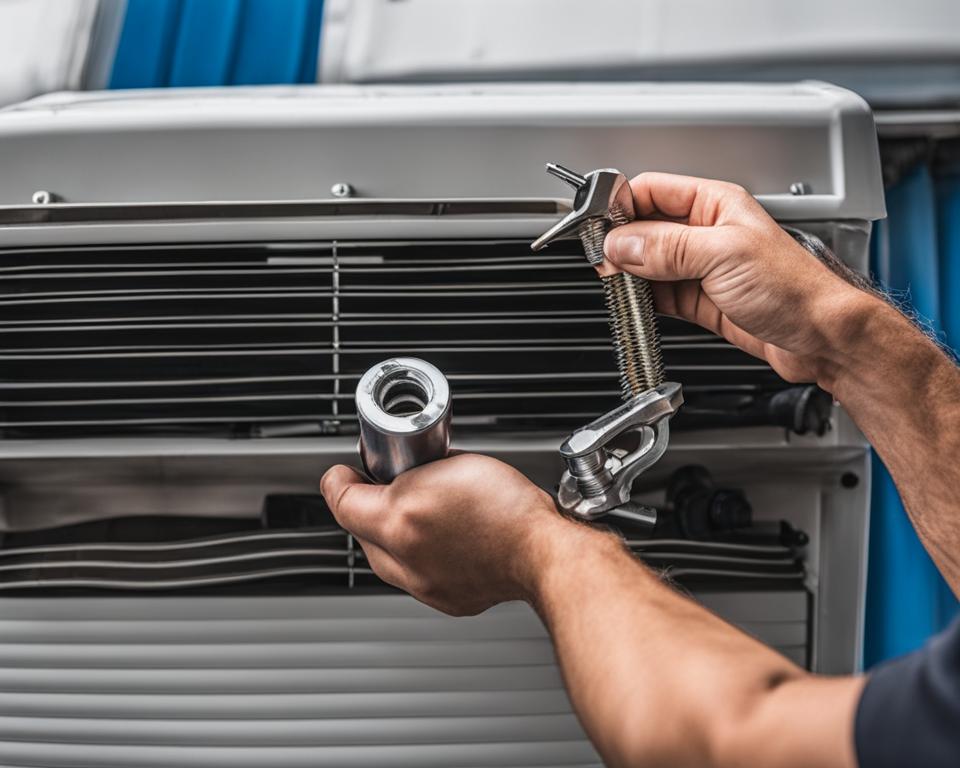
When your RV air conditioner has stopped blowing cold air, it can be frustrating and uncomfortable. However, there are several common issues that could be causing this problem. By identifying and addressing these issues, you can bring back the cool comfort to your RV.
Maintenance is Key
A lack of regular maintenance is often the culprit behind an RV air conditioner not blowing cold air. Dirty filters and blocked coils can restrict airflow and prevent proper cooling. To fix this, make sure to clean or replace the air filter regularly. Additionally, use a soft brush or vacuum to remove any debris or dirt from the coils. This simple maintenance task can greatly improve the cooling performance of your AC unit.
Inspect and Repair Ducts
Tears or holes in the duct system can also lead to a lack of cold air in your RV. Inspect the ducts for any visible damages and repair any rips or tears. This will ensure that the cool air can flow freely from the AC unit to all areas of your RV.
Helpful Tip:
Remember to cover your AC unit when it is not in use. This will prevent any dirt, debris, or unwanted critters from entering the unit and causing blockages or damage.
Regular maintenance and preventive measures can go a long way in keeping your RV air conditioner running smoothly and blowing cold air. By taking these steps, you can avoid future cooling problems and enjoy a comfortable RV experience.
| Common Causes | Solutions |
|---|---|
| Lack of maintenance | Clean or replace air filters regularly Clean coils to ensure proper airflow |
| Tears or holes in ducts | Inspect ducts for damages Repair any rips or tears in ducting |
By addressing these common causes and implementing the recommended solutions, you can troubleshoot and fix the issue of your RV air conditioner not blowing cold air. Ensure that you perform regular maintenance and inspections to prevent future cooling problems and enjoy a comfortable RV journey.
Troubleshooting Your Dometic Air Conditioner
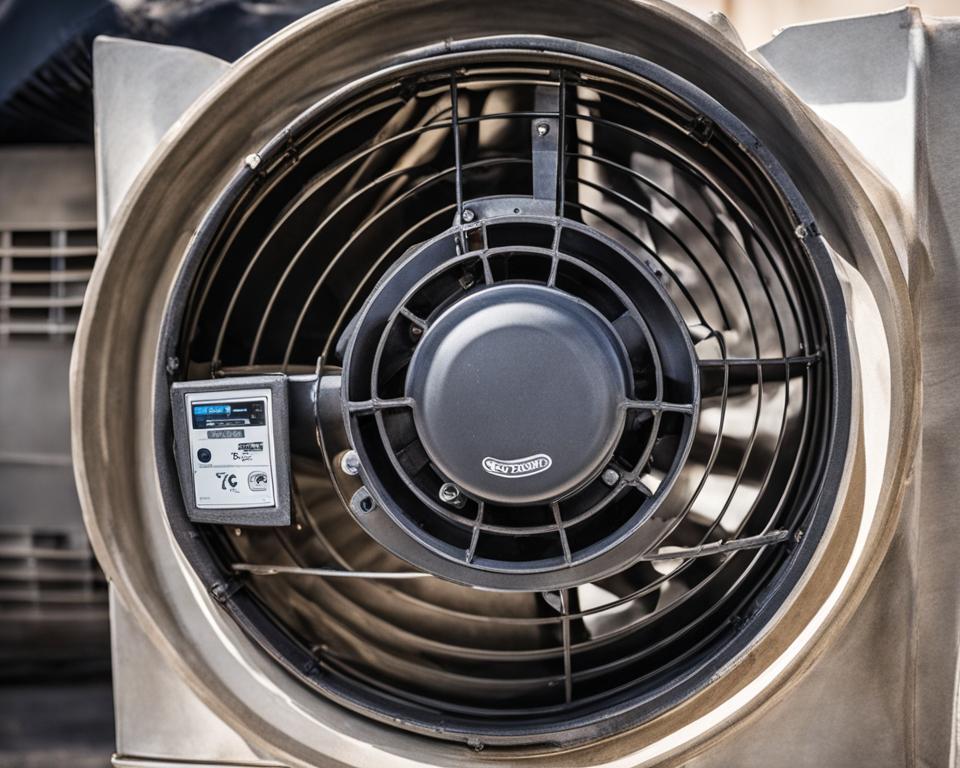
Troubleshooting your Dometic air conditioner is essential when you encounter cooling problems. By following these steps, you can identify the source of the issue and potentially fix it before seeking professional help.
1. Check Compressor Operations:
Start by listening for any unusual noises and feeling for vibrations coming from the compressor. If the compressor is not running or running inefficiently, it could be a contributing factor to the AC not cooling properly.
2. Test Power Supply:
Low or no voltage can hinder your Dometic AC’s performance. Use a voltmeter to check the power supply and ensure that it is sufficient to power the air conditioner. If there are any voltage irregularities, consult an electrician.
3. Clean or Replace Air Filter:
Insufficient airflow is a common culprit for reduced cooling. Remove the air filter and check for dirt or blockages. Clean or replace the air filter if needed to ensure proper airflow and cooling performance.
4. Unblock Coils:
Blocked coils can impede the cooling process. Use an air compressor or a gentle brush to remove any dirt or debris that may be obstructing the coils. This will allow for better heat transfer and improved cooling efficiency.
5. Inspect Duct System:
Check the duct system for tears, holes, or disconnections that could be causing cool air leakage. If any damage is present, repair or replace the affected sections of the ductwork to ensure proper airflow and prevent cool air loss.
6. Clean Registers:
Dust and debris can accumulate in the registers over time, obstructing airflow and reducing cooling efficiency. Clean the registers regularly to ensure unobstructed airflow and optimal cooling performance.
By following these troubleshooting tips, you can potentially resolve the issue of your Dometic air conditioner not cooling properly. If the problem persists or if you are unsure about performing any of the troubleshooting steps, it is advised to seek professional assistance from a qualified HVAC technician.
A Simple Issue That Can Cause Warm Air to Come Out of Your AC

Sometimes, a simple issue can lead to warm air coming out of your AC unit. In RVs with upgraded air conditioning units that require more power, a low power supply from the campground can prevent the AC from blowing cool air. In such cases, consider shutting down other AC units or appliances to avoid overloading the power supply. Alternatively, you may need to move to a campsite with sufficient power for your AC units to function properly. It is important to consider the power requirements of your AC unit when camping to ensure optimal cooling performance.
The Importance of Sufficient Power Supply
When it comes to your AC unit, a sufficient power supply is essential for proper cooling performance. If the power supply at your campground is not adequate, your AC unit may not receive enough power to function optimally. This can result in warm air coming out of the vents instead of cool air. To address this issue, take the following steps:
- Check the power supply: Ensure that the power supply at your campground meets the electrical requirements of your upgraded AC unit. If the power supply is too low, it may be necessary to take action to prevent overloading.
- Shut down other appliances: If the power supply is limited, try shutting down other high-power appliances while running the AC unit. This can help distribute the available power more effectively and prevent overloading.
- Consider a different campsite: If the power supply at your current campsite is consistently insufficient, it may be worth considering moving to a campsite that offers sufficient power for your AC units. Research the power availability at different campsites to ensure a comfortable and cool camping experience.
By addressing the power supply issue, you can ensure that your AC unit receives the necessary power to blow cool air and provide the desired level of comfort during your RV trips.
Summary
When warm air is coming out of your AC unit, it may be due to a simple issue of low power supply. In RVs with upgraded AC units, the power requirements may be higher, and a campground with insufficient power can prevent the AC from cooling effectively. To resolve this problem, consider shutting down other appliances, or if necessary, move to a campsite with sufficient power. It is important to ensure that your AC unit receives the power it needs for optimal cooling performance. By addressing the power supply issue, you can enjoy a comfortable and cool RV experience.
What to Look For in an AC Unit
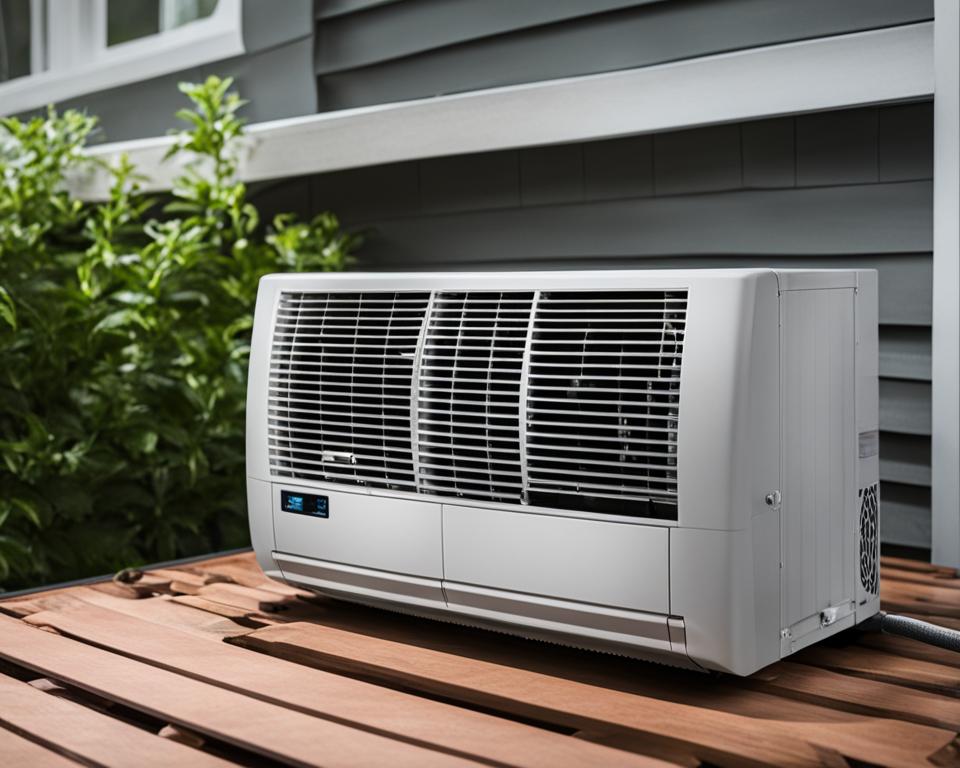
If you need to replace your old Dometic AC unit, there are a few factors to consider when choosing a new one.
BTU Rating
The BTU rating is crucial as it determines the cooling capacity of the unit. In hot geographical locations, you may need an AC unit with a higher BTU rating to stay cool.
Size and Profile
Consider the size and profile of the AC unit. Balance the need for cooling capacity with the potential impact on fuel consumption and drag. Choose a unit that fits well with your RV’s layout and doesn’t compromise interior space.
Additional Features
Opting for a unit with additional features can provide year-round usability. Consider a unit with a heat pump for heating during colder months, providing versatility and added comfort.
Reputable Brand
Choose a reputable brand for easier access to parts and repairs. Selecting a well-known and trusted brand can ensure better quality and reliability for your AC unit.
Installation and Maintenance
Ensure that installation and maintenance processes are manageable. Look for AC units that come with clear instructions, user-friendly controls, and accessible maintenance requirements. Regular maintenance is critical for optimal performance and longevity.
“Choosing the right AC unit that meets your cooling needs and fits well with your RV is essential. A well-rated and properly sized unit, equipped with additional features and backed by a reputable brand, can enhance your comfort on the road.”
By considering these factors, you can find the perfect AC unit for your RV, ensuring reliable and efficient cooling performance.
AC Unit Comparison
| Brand | Model | BTU Rating | Features | Price |
|---|---|---|---|---|
| Dometic | CoolMax 1500 | 15,000 | Heat pump, digital controls | $1,299 |
| Coleman | Mach 8 | 13,500 | Low-profile, energy-efficient | $1,199 |
| Atwood | AirCommand | 11,000 | Quiet operation, remote control | $899 |
Conclusion
When your Dometic AC compressor is running but not cooling, troubleshooting the issue thoroughly is crucial to finding a solution. By checking the voltage, measuring the cooling differential, inspecting the compressor, and testing the capacitors, you can identify possible causes of the problem. Regular maintenance tasks like cleaning the filters, coils, and ducts, as well as ensuring proper airflow and covering the AC unit when not in use, can help prevent cooling issues from arising. However, if all troubleshooting steps fail, it may be necessary to consider replacing the AC unit with a new one that has the appropriate BTU rating and features.
Remember, routine maintenance is essential for keeping your RV AC unit functioning optimally. By following these troubleshooting tips, you can enjoy a comfortable and cool environment while on the road, even in the hottest weather. Stay proactive and address cooling problems promptly to ensure memorable and pleasant experiences during your travels.

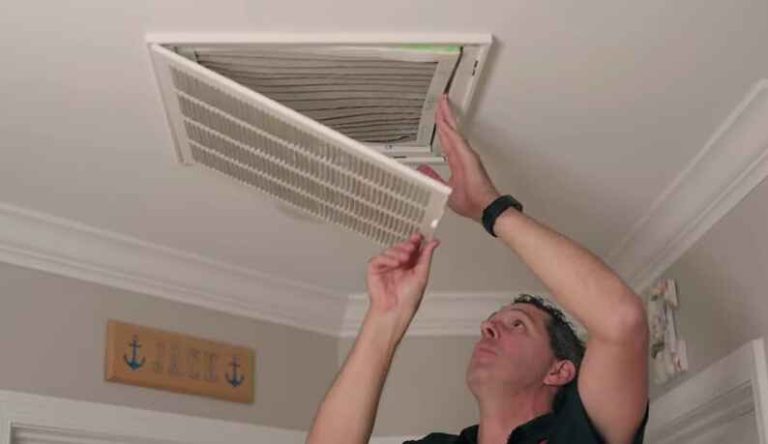
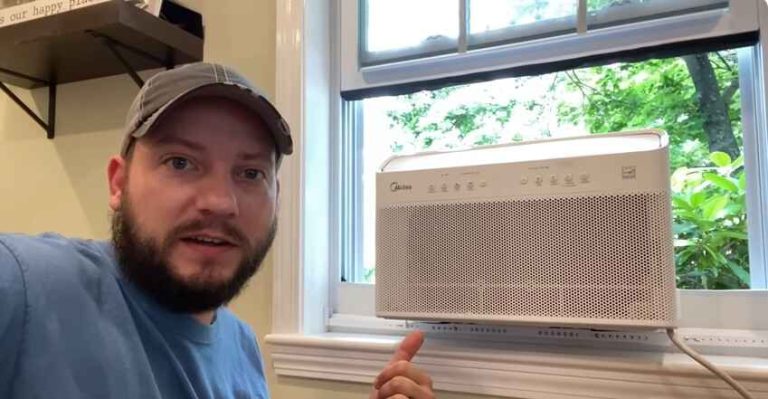
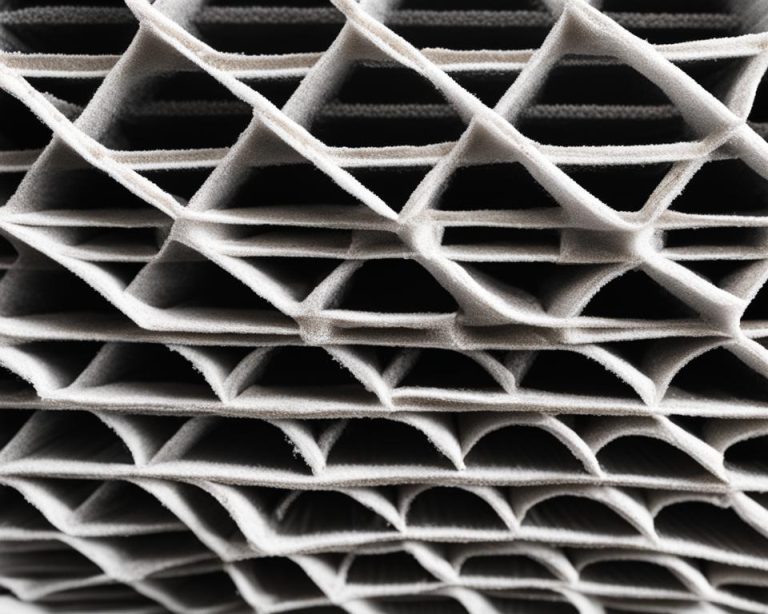
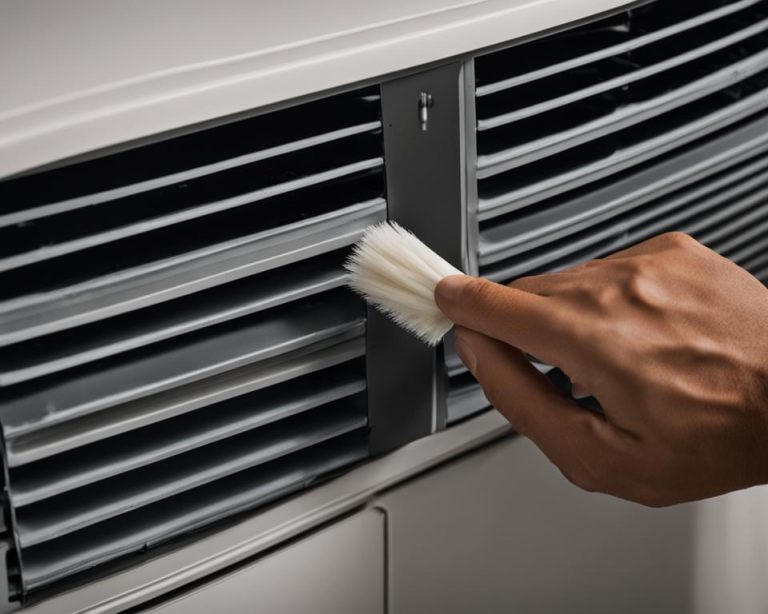
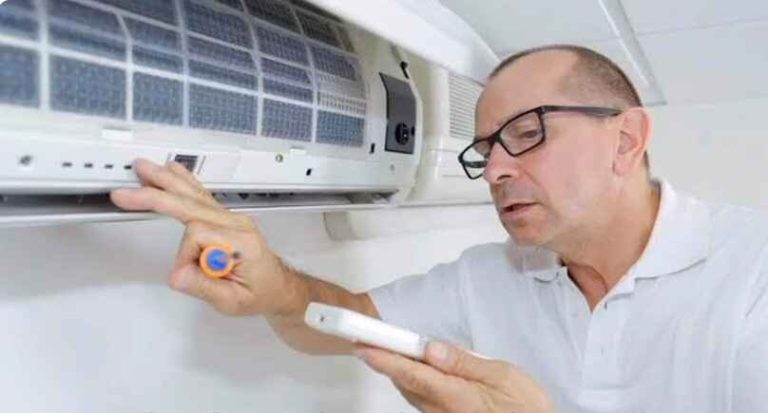
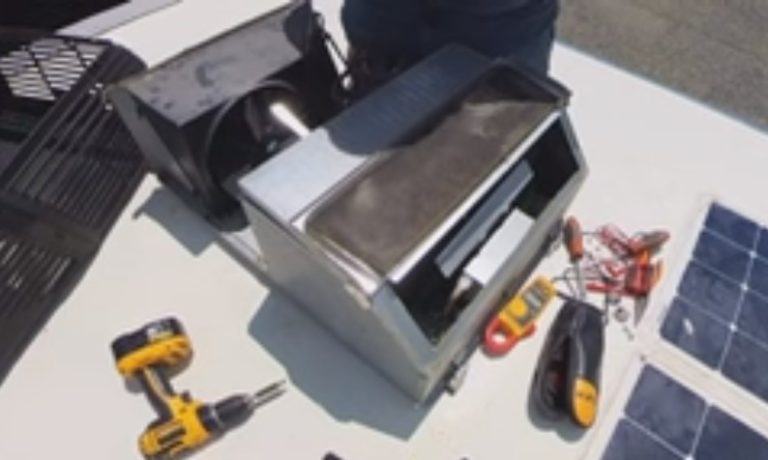
One Comment